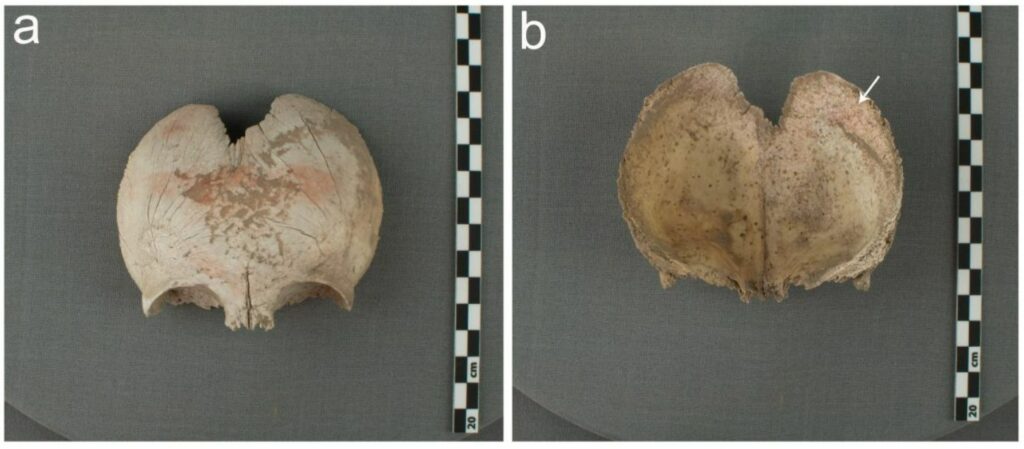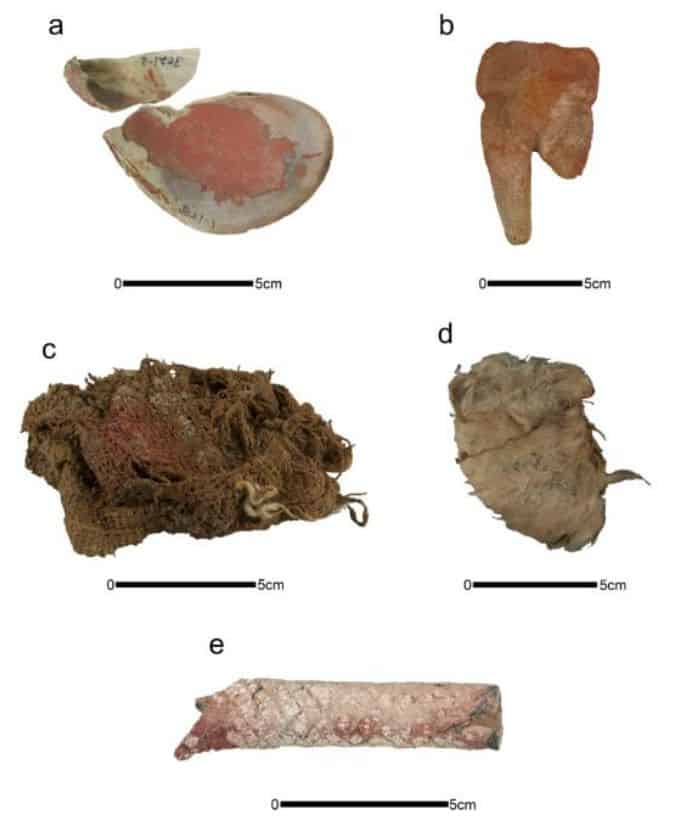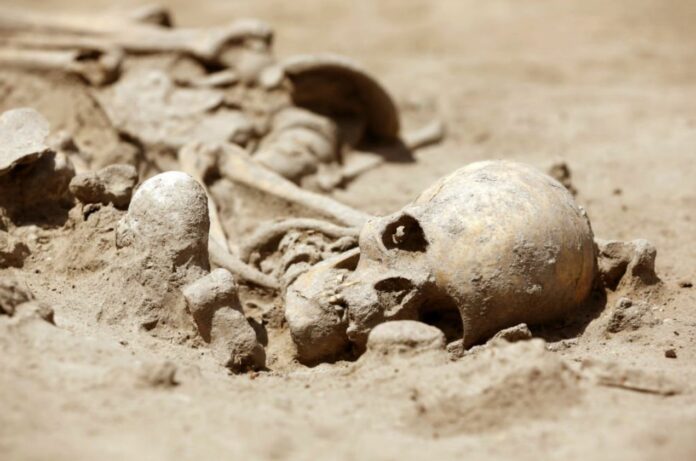In a recent probe, hundreds of human remains were investigated by scientists in the Chincha Valley in southern Peru. The skeletons they looked at were from between the years 1000 and 1825. They were found in more than 100 “chullpas,” which are large structures where many people were buried together.
The researchers set out to figure out who, what, when, where, and why so many of the skeletons had been painted red, as described in the Journal of Anthropological Archaeology.
The researchers found that different types of red paint were used and only certain individuals were painted following death.
In Peru, people have used red pigment in funeral rituals for thousands of years. This is part of a long process of dealing with people who have died.
“Death was not the end,” according to the authors. “It was a pivotal moment of transformation into another kind of existence, and a critical transition from one state to another, providing the basis for further life.”
25 human skulls were among the 38 artifacts and bones studied for their red paint. Using three scientific methods—X-ray powder diffraction, X-ray fluorescence spectrometry, and laser ablation ICP-MS—they determined the red pigments’ composition. 24 of the samples had red paint made of iron-based ochres like hematite, 13 had red paint made of mercury, and one had red paint made of both. Additional chemical testing revealed that the hematite was probably sourced locally whereas the cinnabar was brought from locations hundreds of kilometres distant. Study authors hypothesized that these variations reflected the fact that various types of paint were used by both elites and common people.

Adult men made up the majority of the people whose bones were decorated. But the bones of women, children, people who had healed injuries from trauma, and people whose skulls had been changed as babies were also painted.
Researchers determined the method of applying the red paint by analyzing the skulls.
According to Boston University anthropological archaeologist and research first author Jacob Bongers, “we know that Chincha peoples used textiles, leaves, and their own hands to apply red pigment to human remains.”
On skulls, thick vertical or horizontal lines of paint are consistent with someone applying it with their fingers.
Bongers said that “finger painting would have been critical” for establishing bonds between the living and the deceased.
“The red pigment itself brings to light this living-dead relationship as well as social differences for others to see.”

This finding “makes an important and exciting contribution to understanding the ritual economy of death in the Andes,” according to Benjamin Schaefer, a bioarchaeologist from the University of Illinois Chicago who was not involved in the study.
“The living hand-painting the dead after death offers an intimate and dynamic glimpse into social identities in the Chincha Valley.”
Bongers and his colleagues still don’t know when the red paint was put on, which is one part of the process they don’t understand. Although it is evident that the bones were decorated after the individuals were skeletonized, the act of painting itself may have been a reaction to colonization.
According to the study’s findings, some painted bones, notably crania [skulls], were taken and put over other graves, presumably to ‘protect’ the deceased. They also claim that crimes against the dead, such as looting, would have needed rectification by the living by blending beliefs that are anchored in Andean notions of death and cosmology with the scientific investigation of painted skeletons.
“We hypothesize that individuals reentered disturbed chullpas to paint human remains that had become desecrated after the European invasion,” wrote the study authors.
Image Credit: Getty
